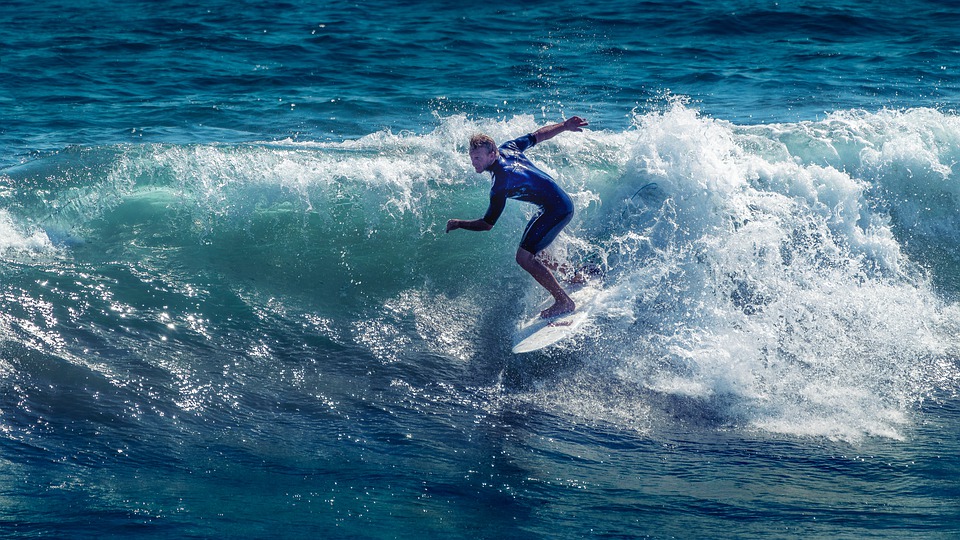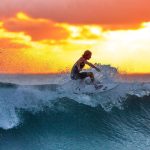One of the most popular aquatic pursuits, surfing is loaded with fun and adventure. If you are a thrill-seeker, your soul will be pampered and stimulated by the delights of surfing. Tourist destinations, like the Maldives, for example, boasts various surf spots and learning centers where tourists can learn the sport.
What is surfing?

Wave Ocean Surfing in Maldives | Image via maxpixel.net
Riding the waves is the simple definition of surfing. The surfer stands tall on a surfboard of various descriptions and slides along with the wave from its crest to the point it breaks down. At first, surfing was done only in the ocean, but now surfing can be enjoyed in great lakes and wave pools.
Types of surfing
There’s a variety in surfing. Types of surfing vary from free surfing to competition surfing to short boarding, to longboarding to tow surfing. Free surfing is when you surf for fun and competition surfing is when you compete with other surfers. Shortboarding is fast-paced while longboarding is relaxed and smooth. Tow surfing, on the other hand, is a daring technique that uses artificial force to catch fast-moving waves.
Surfing in the Maldives
North-East and South-West Monsoons determine surfing in the Maldives. March to April is the North-East Monsoon period and the South-West Monsoon period falls between May and October. The South-West Monsoon makes the conditions optimal in the Central Atolls and the Northern Atolls while the Southern Atolls are perfect for surfing during the North-East Monsoons. Surfing is one of the most popular Maldives excursions, and most accommodation providers, like OBLU Nature Helengeli, cater to surfers of all skill levels.
Surfing gear
Surfing doesn’t require any complicated equipment; all you need is a surfboard and the willingness to foray into an adventure. However, a beginner might need fins, a leash, and wax, not to mention a wetsuit.


